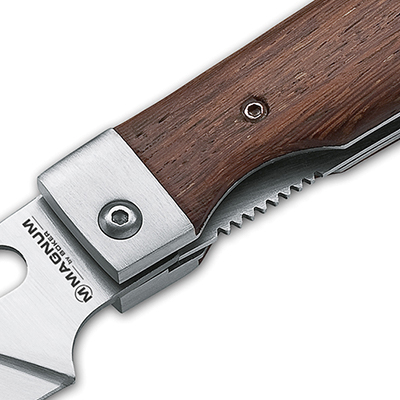Linerlock

The linerlock (alternate spelling: liner-lock) is a locking mechanism mainly used for one-handed knives. Knives equipped with this mechanism are usually called linerlock knives.
The linerlock was invented in the late 19th century in the United States and patented there in 1906. This early version of the linerlock could not be opened with one hand though. The first truly one-handed linerlock knife was only developed after the patent for the original linerlock version had expired. The one-handed linerlock knife was designed by Michael Walker, a US knifemaker. In the 1980s, he introduced an improved linerlock knife first called the "Walker Linerlock".
The special feature of this linerlock is the plate between the handles scales used to lock or release the blade. The mechanism derives its name from this plate or liner. The liner is slightly curved inward. In the front, it extends past the bottom of the handle scales so that it can be operated from the outside. Usually, the plate of a linerlock is made from very hard metal such as stainless steel or titanium, because it needs to hold the blade in place even under great pressure.
The linerlock mechanism works as follows: When the blade is closed, it pushes the liner to the side. When the blade is opened, it makes room for the liner pushing towards the inside and locking in place below the end of the blade. In order to release and close the blade, the liner must be moved to the side manually. Modern linerlocks, available since the 1980s, can be operated with one hand, which made this locking mechanism very popular.
